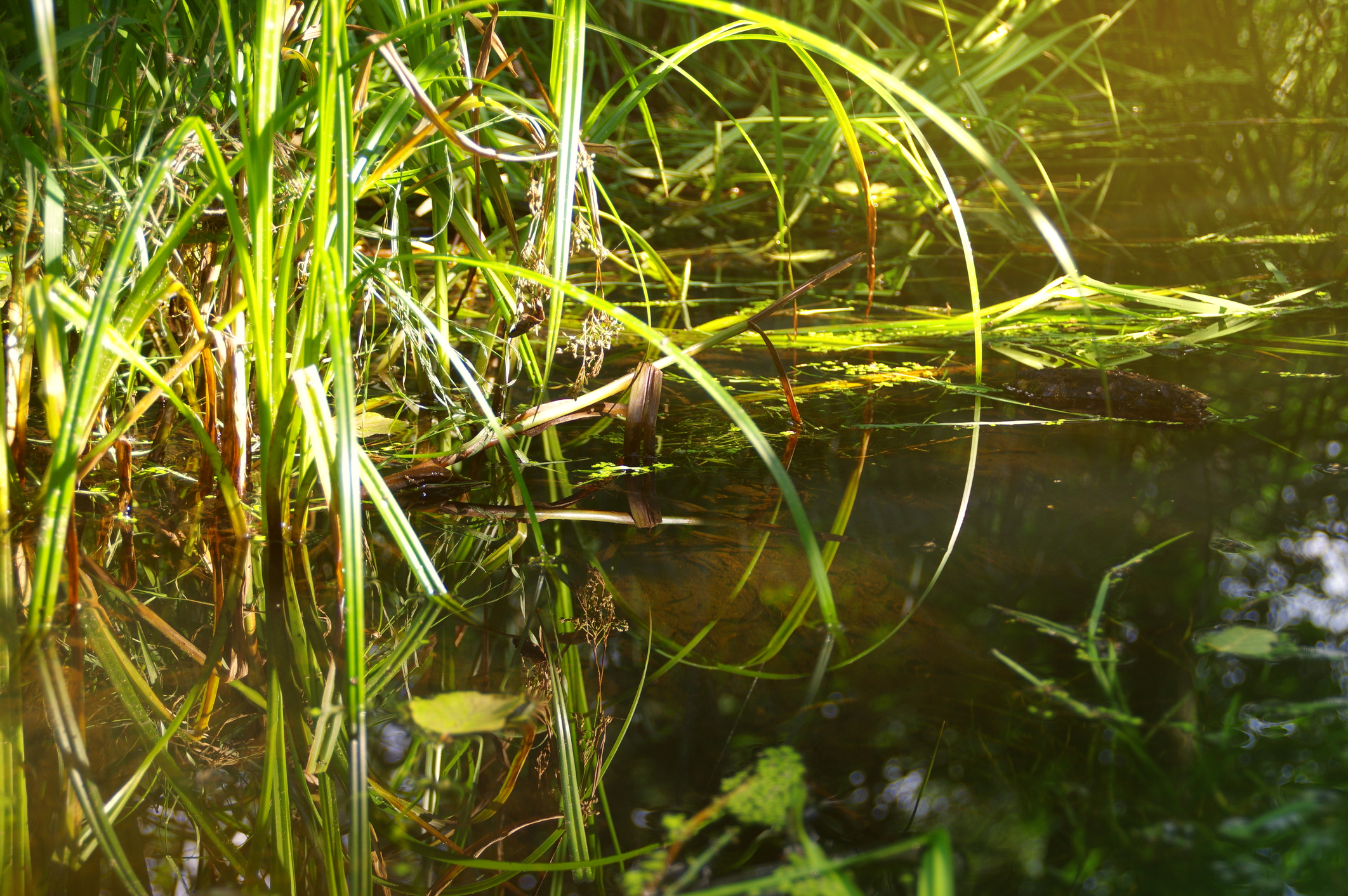 Retention ponds are functional natural infrastructure that serve an important purpose.
Retention ponds are functional natural infrastructure that serve an important purpose.
First, they capture and retain stormwater runoff to control the quantity of water entering the Town’s drainage system.
Then, the pond’s natural processes work to remove pollutants from the water, before it enters the creek systems and eventually the marine environment.
Retention ponds are surrounded by natural vegetation, which improves bank stability and increases the aesthetics of the space.
Advantages of retention ponds
Retention ponds like the ones in the Parkland neighbourhood deliver many benefits, including:
- Collect stormwater and reduce risk of floods;
- Improve water quality;
- Naturally process water without expensive equipment;
- Create new habitats; and
- Increase natural green spaces.
Components of a retention pond
Retention ponds comprise three “benches” that differ in plant life and design.
- Marine Bench: Sedges, rushes, marine grasses, some sediment and rocky debris
The Marine bench is the lowest lying portion of the retention pond. As it may be below the standing water level at any given time, undergrowth should allow for ease of sediment travel.
- Riparian Bench: Marine grasses, nitrogen-fixing trees and shrubs, bank stabilizing plant life (clover, grass, ferns), coarse woody debris
The Riparian bench sits between the marine and upland bench and holds most of the bank in place. This bench should be planted with soil retaining grasses and ferns, as well as smaller nitrogen-fixing trees with taproots, like oaks and pines. Water resilient trees are also common on this bench, as it may become sub-marine during wet weather events or overflow events.
- Upland Bench: Coniferous, deciduous trees with lateral root systems, large rocky debris
The Upland bench sits at the top of the bank and should be planted with larger trees with lateral root systems, such as birches, cottonwoods, alders and maples. Lateral root systems help stabilize the upper bank, as well as help absorb rainwater and overflow during weather events.
Maintenance of retention ponds
Town staff follow best practices for maintaining retention ponds in Parkland. These include:
- Planting noninvasive, riparian plant species to keep pond water in good order, while reducing sediment and build up within stormwater;
- Regularly clearing silt and sediment build up from retention ponds, including slope sides and directional infrastructure;
- Inspecting, clearing, maintaining, and repairing critical infrastructure, such as headwalls, catch basins, flow control grates, and geo matting;
- Removing foreign contaminants like garbage, dog waste, green waste, etc. to reduce algae bloom and plant dieback;
- Inspecting, maintaining, and repairing water delivery systems to and from retention ponds; and
- Removing excessive plant growth, and regularly brushing and trimming in and around retention berms and the outer banks.

